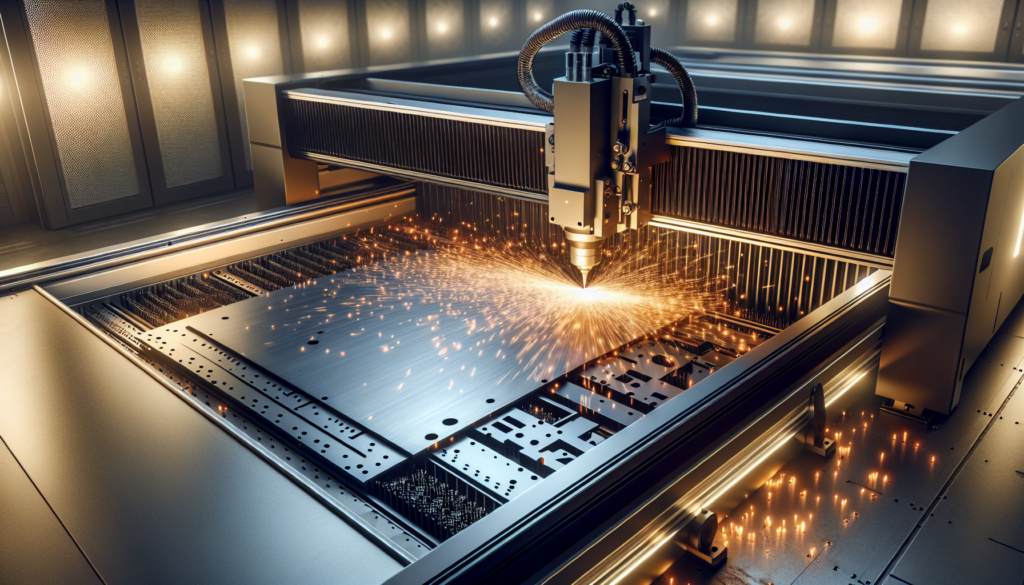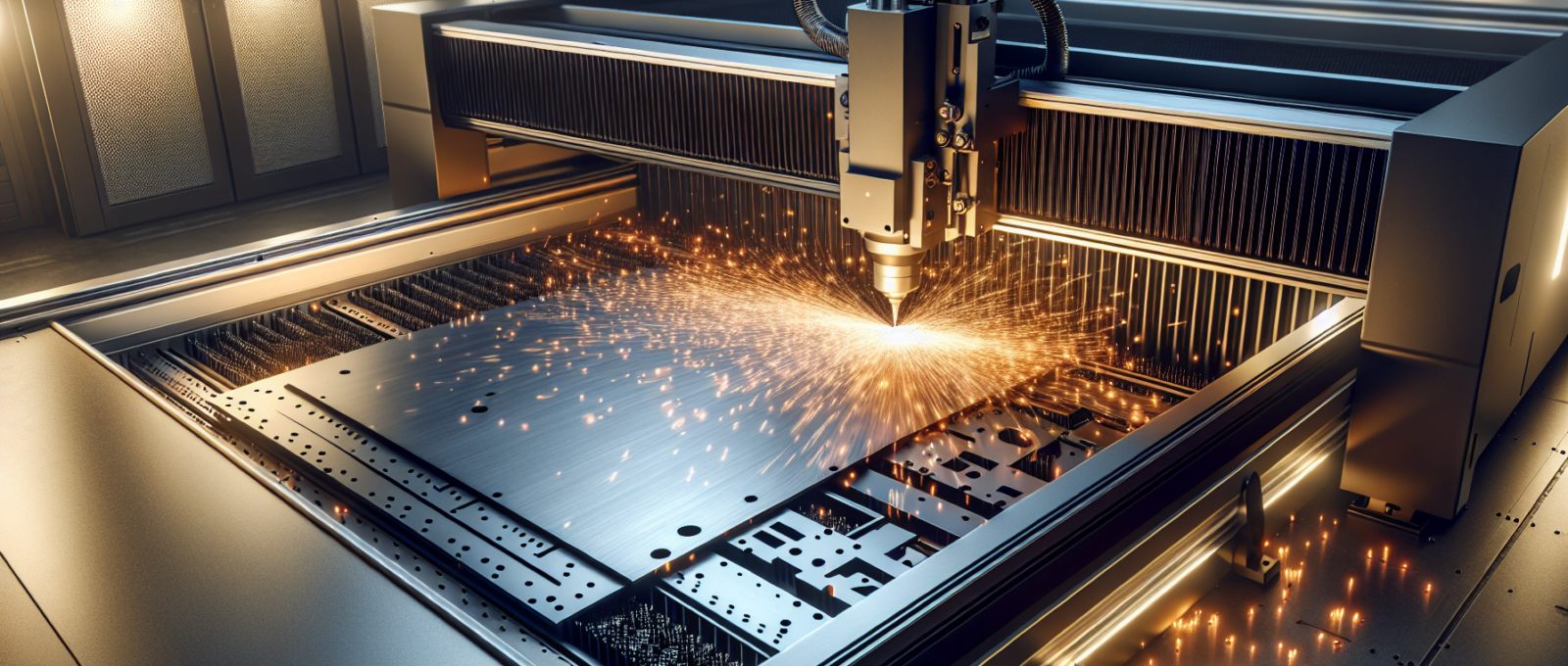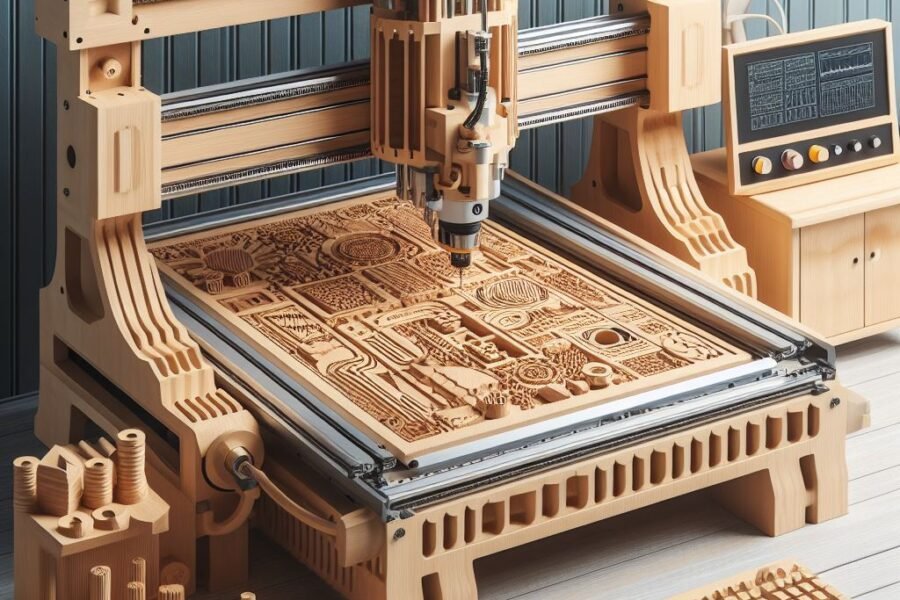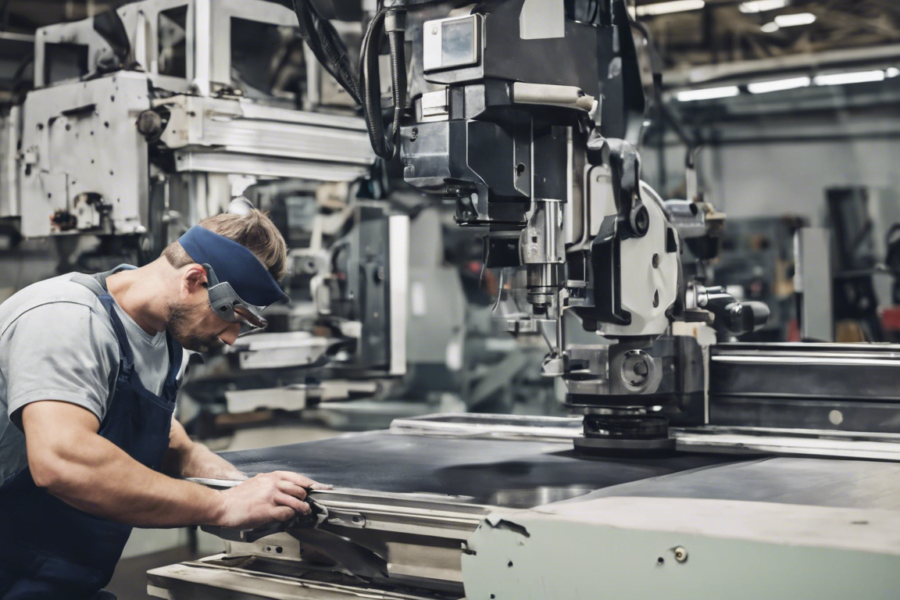
As we progress through this article, we’ll uncover the essential aspects of CNC laser cutting technology, including key features that delineate an advanced system, and the impacts these have on broadening industry horizons. We will also guide you through selecting the right CNC laser cutter to meet your specific needs, balancing functionality with budget considerations. Furthermore, the importance of maintenance and adherence to safety protocols will be highlighted, ensuring longevity and operational efficiency. By providing a roadmap through these critical topics, our goal is to equip you with the insight needed to navigate the complexities of CNC laser cutter selection and utilization, ensuring you make informed decisions that enhance your crafting or manufacturing capabilities.
Understanding CNC Laser Cutting Technology
In the realm of precision cutting and engraving, the CNC laser cutter stands as a monumental innovation, democratizing high-quality manufacturing for businesses and hobbyists alike. Not only does it offer unparalleled accuracy and efficiency, but its evolving affordability also means that top-tier fabrication is no longer exclusive to industrial giants. We recognize the significance of integrating this technology into various sectors, acknowledging its potential to revolutionize product development, custom manufacturing, and even artistic expression. This understanding compels us to delve deeper into the capabilities and benefits of modern CNC laser cutters, setting the stage for a comprehensive exploration of this transformative tool.
Basics of CNC Laser Cutters
CNC laser cutters are advanced tools that facilitate precise cuts and engravings on various materials, using a focused laser beam controlled by computer numerical control (CNC) systems. These machines are integral in industries ranging from engineering to art, allowing for detailed work on both large industrial materials and smaller, intricate designs 78914. A CNC laser cutter operates by directing a laser beam, created by stimulating a mix of gases or doped crystals, through a series of mirrors onto the material, which is then either melted, burned, or vaporized to form the desired cut or engraving 1415.
Types of Lasers Used in Cutting and Engraving
There are primarily three types of lasers used in CNC laser cutters: CO2, fiber, and crystal lasers, each suited for different materials and applications. CO2 lasers, using a carbon dioxide gas mixture, are versatile and commonly used due to their efficiency and ability to cut through various materials including non-metals and some metals 78. Fiber lasers, generated through doped glass fibers, are preferred for their maintenance ease and ability to cut reflective metals more efficiently 781012. Crystal lasers, such as Nd:YAG and Nd:YVO, offer high power and precision, making them suitable for heavy-duty industrial applications and materials that require intense laser focus 71011.
The Intersection of CNC and Laser Cutting
The integration of CNC technology with laser cutting has revolutionized manufacturing by enhancing precision, speed, and versatility. CNC systems control the movement of the laser beam, ensuring high accuracy and repeatability, which is crucial for mass production and detailed custom work 914. This synergy allows for complex designs and consistent cuts, which are vital in industries like automotive, aerospace, and electronics, where precision is paramount 1415. The non-contact nature of laser cutting also minimizes material waste and damage, making it an economically and environmentally preferable technology 89.
By understanding these fundamentals of CNC laser cutting technology, we can appreciate its impact on modern manufacturing and the potential it holds for future advancements in various fields 7891011121415.
Key Features to Look for in a Modern CNC Laser Cutter
Power and Precision
When evaluating modern CNC laser cutters, power and precision are paramount. The power output, measured in watts, directly influences both the cutting speed and the material thickness that the cutter can handle. Higher power settings enable the cutter to handle thicker and more thermally conductive metals efficiently, whereas lower power settings are better suited for thinner, less dense materials 17. Precision is equally critical, with standard tolerances ranging from +/- 0.1 mm to +/- 0.01 mm, depending on the machine and the material. This level of precision ensures that parts are produced with exact dimensions, crucial for applications requiring tight tolerances 21.
Ease of Use and Software Compatibility
Ease of use and software compatibility are also key features to consider. Modern CNC laser cutters often require specific software to create and process cutting instructions. It’s essential to choose a cutter that is compatible with the design software you’re already using or plan to use. For instance, Coreldraw is commonly preferred for smaller machines due to its ease of use and compatibility with mainstream laser drivers, which optimizes the machine’s performance by efficiently translating design files into actionable cutting instructions 19. Additionally, ensuring that the machine’s firmware and software are up-to-date can prevent compatibility issues and enhance the machine’s operational efficiency 20.
Safety Features and Reliability
Safety and reliability cannot be overlooked when selecting a CNC laser cutter. Due to the potential hazards associated with laser cutting, such as the risk of burns from the laser or harmful gases released during cutting, it is crucial to choose machines that are equipped with robust safety features. These include interlocked, laser-proof covers, and emergency stops. Reliable ventilation systems are also important to ensure harmful fumes are adequately vented out of the work area 23. Moreover, the reliability of a CNC laser cutter can be assessed by its build quality, customer reviews, and the quality of after-sales support offered by the manufacturer 23.
The Transformative Impact on Industries
Manufacturing and Prototyping
The advent of laser cutting technology has significantly expedited the prototyping process, enabling rapid production and iteration of designs, which is crucial in today’s fast-paced manufacturing environments 2627. This technology allows for precise cutting and engraving, which is essential for creating detailed and accurate prototypes. By reducing the time and cost associated with traditional prototyping methods, laser cutting has become a pivotal tool in product development across various industries 2526. Additionally, the integration of Enterprise Resource Planning (ERP) systems with laser cutting operations enhances efficiency by optimizing inventory management and quality control, ensuring high-quality output and timely delivery 26.
Education and Makerspaces
In educational settings and makerspaces, laser cutting technology fosters innovation and creativity among students and hobbyists 2829. These environments utilize laser cutters to teach valuable skills such as design thinking and problem-solving, while also providing the tools necessary for hands-on learning and experimentation 2829. The versatility of laser cutters allows users to work with a wide range of materials, making it an ideal tool for a variety of projects, from simple crafts to complex engineering prototypes. The accessibility of this technology in schools and public makerspaces democratizes the ability to create and innovate, empowering individuals to bring their ideas to life 28.
Art and Design
In the realm of art and design, laser cutting machines have revolutionized the way artists and designers approach their craft 3132. The precision and versatility of laser cutters enable the creation of intricate designs and patterns on diverse materials, opening up new possibilities for artistic expression 31. This technology has not only expanded the creative potential of individuals but also allowed for greater personalization and customization in the production of art and design works. As a result, businesses in the creative industries can offer unique, bespoke products that stand out in the market, attracting customers looking for one-of-a-kind items 3132.
Choosing the Right CNC Laser Cutter for Your Needs
Assessing Your Project Requirements
When considering a CNC laser cutter, it’s crucial to evaluate the specific needs of your projects. If you’re transitioning from outsourcing to in-house production, the benefits often include reduced administrative burdens and faster turnaround times, which should be factored into your decision 40. Additionally, the type of materials you plan to cut and the precision required are significant factors. For instance, different lasers like CO2, fiber, and crystal have varying efficiencies across different materials 781011. Understanding these aspects will guide you in selecting a laser cutter that aligns with your production needs and capabilities 40.
Budget Considerations
Budgeting is a vital step in the selection process. Initial costs of a CNC laser cutter are considerable, and it’s essential to perform a thorough cost/benefit analysis to determine the feasibility of the investment 40. This includes not only the upfront cost but also ongoing expenses such as maintenance, materials, and auxiliary equipment 40. For those with a constrained budget, it may be necessary to compromise on certain features, like bed size or laser power, to find a balance between cost and functionality 38. Additionally, consider the potential for financing options or purchasing refurbished models as a way to manage costs 3839.
Future-Proofing Your Investment
Choosing a CNC laser cutter that can adapt to future needs is another critical consideration. Investing in a more capable machine initially might seem costly but can save money in the long run if your product range expands or evolves 40. It’s also wise to select a machine that offers upgrade possibilities, allowing you to enhance its capabilities as your business grows without needing to replace the entire system 39. Moreover, ensuring the machine is compatible with the latest software and can handle upcoming technological advancements will protect your investment and keep your operations at the cutting edge 3739.
Maintenance and Safety Tips
Regular Cleaning and Calibration
Proper maintenance is crucial for ensuring optimal performance and longevity of your laser cutting machine. Regular cleaning of both the interior and exterior of the machine is essential. Pay special attention to the machine cabinet, the bed, and any areas where materials may accumulate. Use a soft brush or cloth to remove any dust or debris, ensuring not to scratch any surfaces 43.
Mirrors and lenses play a critical role in the precision of the laser beam. Regularly inspect and clean these components using appropriate cleaning solutions and a lint-free cloth to maintain beam strength and quality 434445. It’s also important to regularly check and lubricate the runners and the rise and fall of the bed using light oil to prevent wear on moving components 43.
Proper alignment is essential for accurate cutting. Regularly calibrate the alignment of your laser cutting machine to ensure precise and consistent cuts. Follow the manufacturer’s instructions for alignment procedures 4344. Additionally, ensure the machine’s control system is correctly calibrated and that all safety enclosures are secure 44.
Understanding and Implementing Safety Protocols
Safety is paramount when operating a CNC laser cutter. Always wear the correct safety gear, including laser safety glasses, a mask or respirator, and thick gloves to protect against potential hazards 4748. It is crucial to be properly trained on the general hazards of laser cutting as well as the detailed procedures and interlocks of your specific machine 47.
Ensure that all safety features, such as interlocks and emergency stops, are functioning properly. Never bypass these features as they are critical to preventing accidents 4748. Keep a fire extinguisher nearby and ensure that it is properly maintained and easily accessible in case of fire 4748.
Regularly inspect the laser cutter for any signs of damage or wear, such as loose bolts, screws, or electrical connections. Check for cleanliness and proper operation of crucial components like the lens, mirrors, and exhaust system 4448. Always supervise the laser cutting or engraving process to quickly address any issues that may arise, such as material ignition 48.
By adhering to these maintenance and safety protocols, you can ensure that your CNC laser cutter operates safely and efficiently, minimizing the risk of accidents and extending the life of your equipment 43444748.
Conclusion
Through the exploration of modern CNC laser cutting technology, its impact on various industries, essential considerations in choosing the right equipment, as well as maintenance and safety protocols, this article has underscored the transformative potential of these cutting-edge tools. Emphasizing the importance of precision, versatility, and innovation, CNC laser cutters emerge as pivotal in enhancing the productivity and creative capabilities of businesses and individuals alike. As we have detailed, selecting a CNC laser cutter that aligns with your specific needs and budget, while ensuring adherence to safety and maintenance recommendations, can significantly contribute to operational efficiency and the realization of creative projects.
The advancement of CNC laser cutting technology not only represents a leap forward in manufacturing and design but also serves as a testament to the ongoing evolution within the fields of engineering, art, and education. The potential for future developments and applications promises even greater integration of these tools into a wider array of processes and projects. As the technology continues to evolve, so too does the opportunity for innovation, signaling an exciting era for creators and manufacturers around the globe. In embracing CNC laser cutting technology, users are equipped to push the boundaries of what’s possible, ensuring their place at the forefront of their respective industries.
FAQs
1. What is the premier choice for a laser cutter?
The xTool P2 is highly recommended as the top laser cutter on the market. While it is not the most budget-friendly option, it offers exceptional features including advanced accessories, superior software, and impressive cutting dimensions and speed, narrowly surpassing the Glowforge Pro.
2. Between CO2 and fiber laser cutters, which one is superior?
Fiber laser cutters excel in speed when cutting thin metal sheets (less than 8 mm), especially stainless steel. For instance, a fiber laser can cut a 1 mm sheet up to six times faster than a CO2 laser, and this speed advantage reduces to about twice as fast for a 5 mm sheet.
3. What is the optimal laser module for a CNC machine?
The XF+ laser head is considered the best for those looking to start with laser cutting and engraving. It features a rotatable lens sleeve and is built to last for years, using up to 30 W of electrical power. The XF+ is ideal for achieving laser engraving in Standard+ definition, which is about 80 DPI.
4. Which is more effective: a CO2 laser or a diode laser cutter?
CO2 laser engravers are more powerful than diode lasers, offering greater heat energy which allows them to cut through a broader range of materials. CO2 lasers typically have an optical power ranging from 40W to 300W, making them highly suitable for both cutting and engraving a variety of materials.
References
[1] – https://www.hubs.com/blog/laser-cutting/
[2] – https://xometry.pro/en-uk/articles/laser-cutting-overview/
[3] – https://www.hytekmarketing.biz/blog/what-is-cnc-laser-cutting-how-does-it-work-and-its-advantages
[4] – https://www.creativebloq.com/buying-guides/best-laser-cutters
[5] – https://hagensieker.com/2022/12/23/best-budget-laser-engraver/
[6] – https://3dwithus.com/best-budget-laser-cutters-and-engravers-buyers-guide
[7] – https://www.instructables.com/Laser-Cutting-Basics/
[8] – https://www.china-machining.com/blog/what-is-a-cnc-laser-cutter/
[9] – https://foxvalleystamping.com/cnc-laser-cutting-process-the-basics/
[10] – https://www.xometry.com/resources/sheet/types-of-laser-cutters/
[11] – https://www.3erp.com/blog/three-main-types-of-lasers-for-cutting/
[12] – https://www.accurl.com/blog/types-of-cnc-laser-cutting-machine/
[13] – https://www.quora.com/What-are-the-differences-between-CNC-and-CO2-laser-cutters-and-which-one-is-considered-better
[14] – https://phillipscorp.com/india/what-is-cnc-laser-cutting-and-how-does-it-work/
[15] – https://www.emachineshop.com/science-behind-sheet-metal-cutting/
[16] – https://www.jtvmfg.com/blog/how-precise-is-laser-cutting/
[17] – https://www.xometry.com/resources/sheet/laser-cutter-speed-vs-power/
[18] – https://baisonlaser.com/blog/speed-and-power-of-laser-cutting/
[19] – https://www.cnczone.com/forums/lasercut/127169-cnc-autocad-software.html
[20] – https://sendcutsend.com/blog/best-laser-cutting-design-software/
[21] – https://www.accurl.com/blog/cnc-laser-cutting/
[22] – https://ehs.wisc.edu/laser-cutter-safety/
[23] – https://www.xometry.com/resources/sheet/safety-gears-when-using-laser-cutter/
[24] – https://www.accurl.com/blog/laser-cutting-accuracy/
[25] – https://sendcutsend.com/blog/how-to-make-a-prototype/
[26] – https://www.preferredmachinellc.com/from-prototype-to-mass-production-using-cnc-laser-cutting-to-scale-your-operation
[27] – https://sendcutsend.com/blog/how-do-you-prototype-one-creators-lucky-find/
[28] – https://monportlaser.com/blogs/130w-co2-laser-engraver/a-laser-cutter-is-the-most-popular-tool-in-makerspace
[29] – https://www.linkedin.com/pulse/revolutionizing-education-through-laser-cutting-ignite-lev-uzlaner
[30] – https://www.troteclaser.com/en-us/laser-applications/education-and-schools
[31] – https://www.fiberlasercutting.co.in/2024/03/07/innovative-ways-to-use-laser-cutting-machines-in-art-and-design/
[32] – https://thebossmagazine.com/laser-cutting-modern-industry/
[33] – https://jgwmachine.com/how-laser-cutting-machine-technology-is-revolutionizing-manufacturing/
[34] – https://www.xometry.com/resources/sheet/laser-parameters/
[35] – https://sendcutsend.com/guidelines/laser-cutting/
[36] – https://www.makerverse.com/resources/sheet-metal/best-practices-designing-for-laser-cutting/
[37] – https://prototool.com/cnc-laser-cutting-machine/
[38] – https://www.focusedlasersystems.com/laser-cutter-guides/ultimate-laser-cutter-buying-guide
[39] – https://www.hflaser.com/what-makes-the-best-budget-laser-cutter-the-ultimate-guide-to-choosing-the-right-machine.html
[40] – https://www.airproducts.co.uk/-/media/files/en/93645-ap-laser-cutter-booklet.pdf
[41] – https://www.youtube.com/watch?v=_eQkj2uPPtc
[42] – https://www.linkedin.com/pulse/global-laser-cutting-heads-market-future-proofing-f7fbc?trk=article-ssr-frontend-pulse_more-articles_related-content-card
[43] – https://bosslaser.com/how-to-maintain-and-service-your-laser-cutting-machine-effectively/
[44] – https://www.thunderlaser.com/laser-cutting-machine-maintenance-guide-ensuring-optimal-performance/
[45] – https://beniko.com/maintaining-your-laser-cutter-for-optimal-performance-share-tips-on-cleaning-calibration-and-routine-maintenance-to-extend-the-life-of-your-equipment/
[46] – https://ehs.wisc.edu/laser-cutter-safety/
[47] – https://www.xometry.com/resources/sheet/laser-cutting-safety-precautions/
[48] – https://www.ehs.washington.edu/system/files/resources/laser-cutter-safety.pdf
[49] – https://baisonlaser.com/blog/cnc-laser-cutting-machine/
[50] – https://www.acra.com.au/why-you-should-invest-in-a-laser-cutter/
[51] – https://www.vmadecnc.com/news/the-benefits-of-investing-in-a-laser-cutting-machine:-a-comprehensive-guide.html
[52] – https://www.thefabricator.com/thefabricator/article/lasercutting/the-rapid-evolution-of-modern-laser-cutting-technology
[53] – https://www.jqlaser.com/the-future-of-laser-cutting-technology/
[54] – https://www.treatstock.com/blog/innovations-in-laser-cutting-technology




Leave a Comment